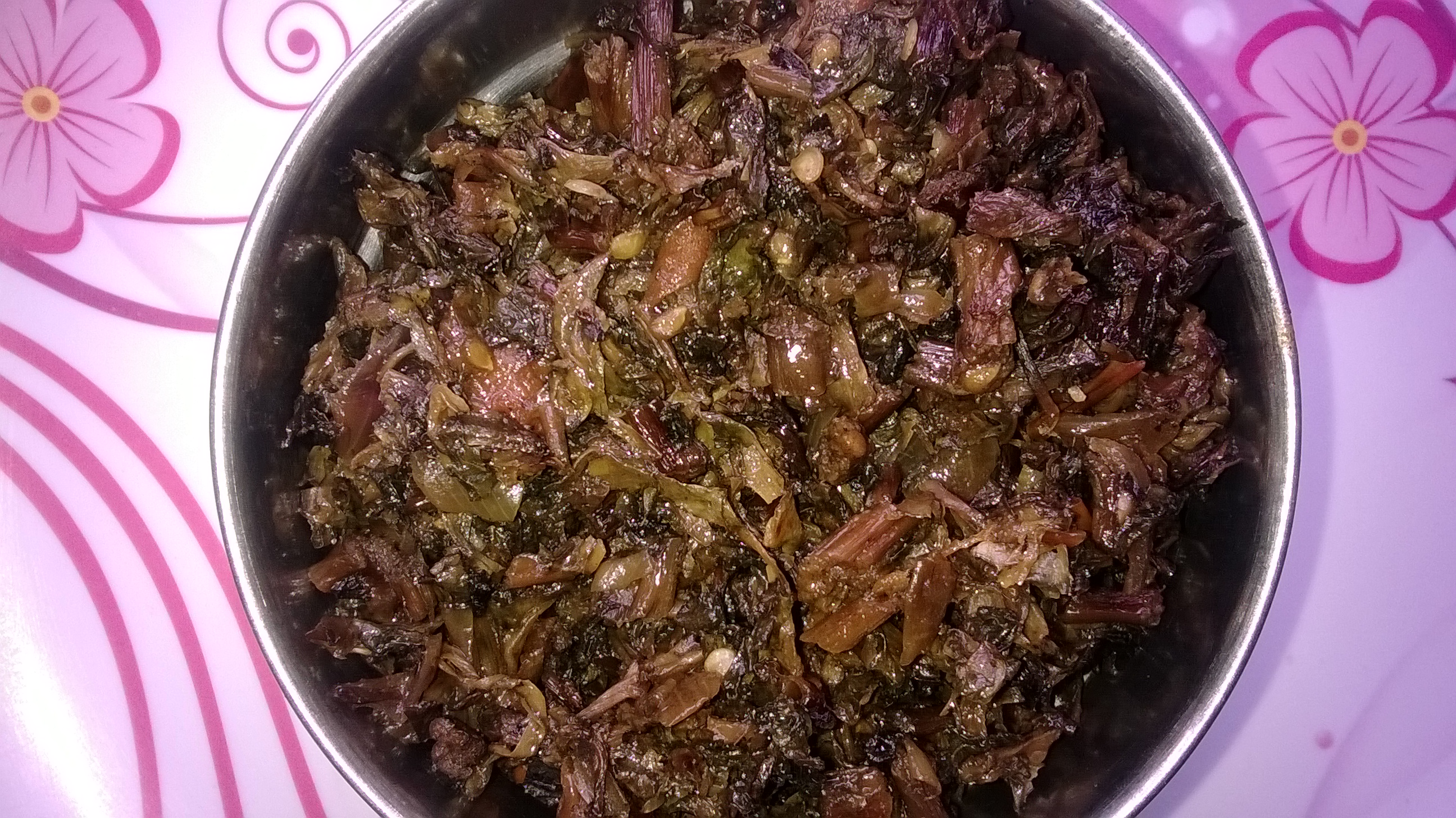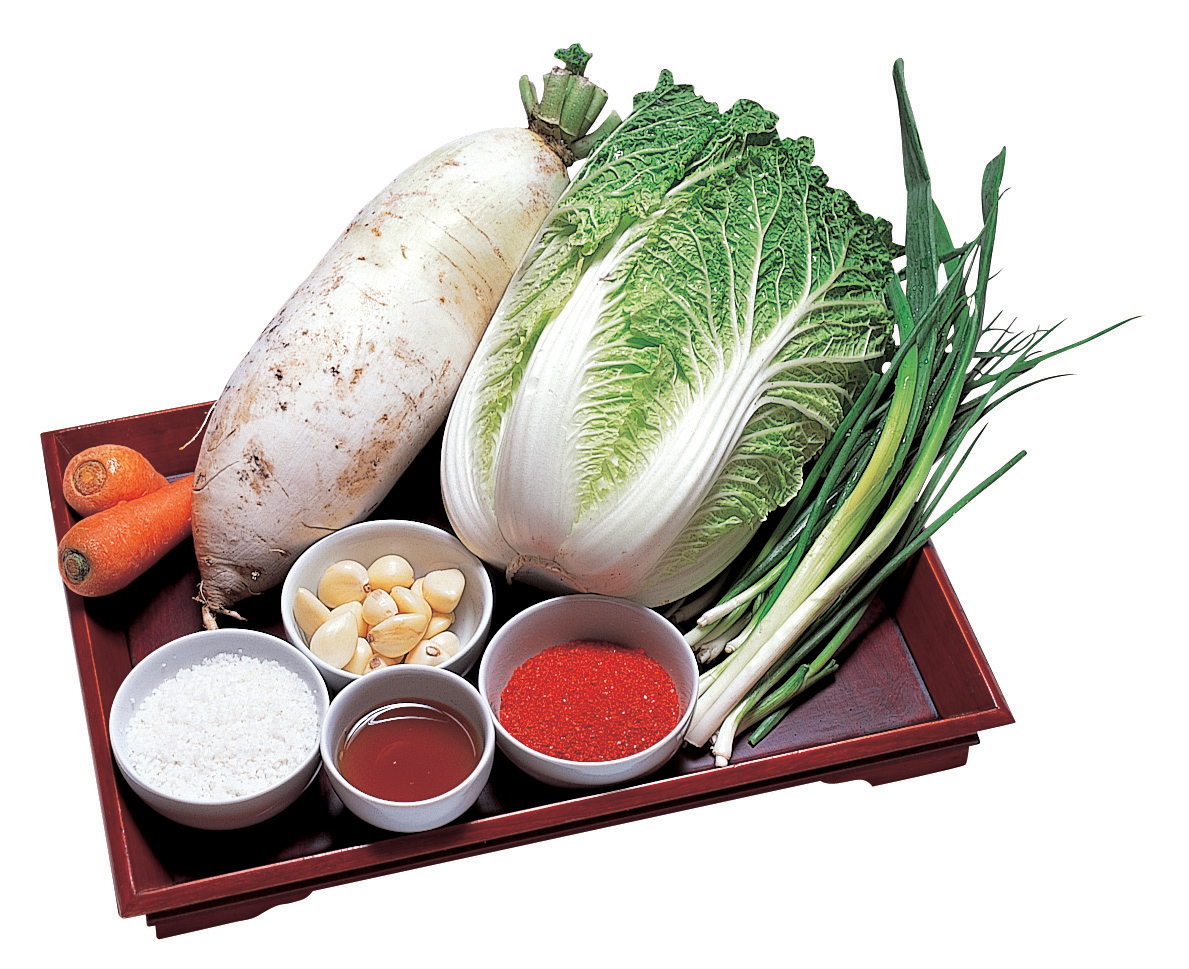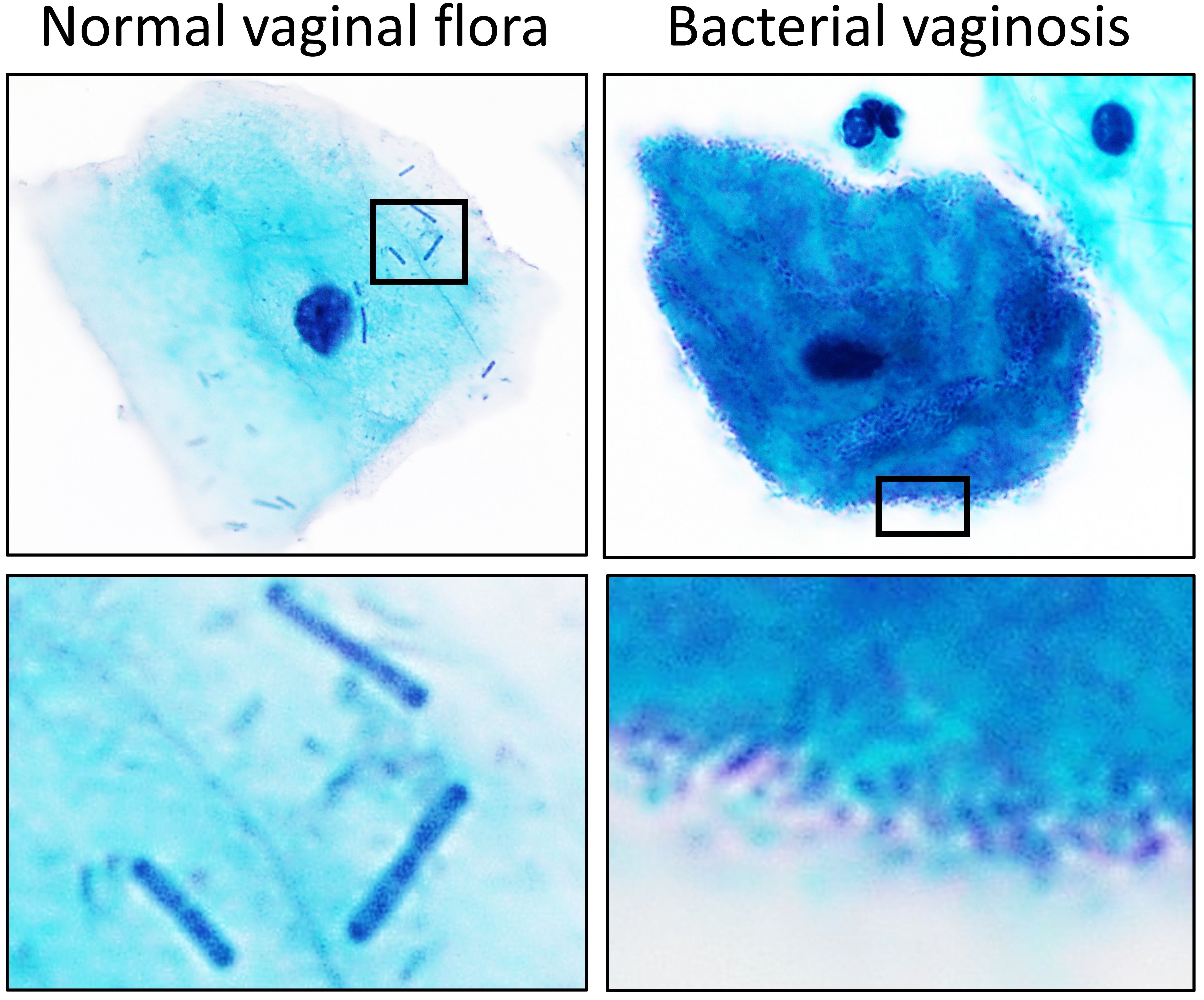|
Gundruk
''Gundruk'' ( ) is a dish made of fermented leafy green vegetables (''saag''; ), originating in Nepal. It is also popular in Sikkim and other regions of India, as well as in Bhutan and Myanmar. Annual production of gundruk in Nepal is estimated at 2,000 tons, most of it at the household level. Gundruk is served as a side dish or as an appetizer. It is an important source of minerals, particularly during the off-season, when local diets mostly consist of starchy tubers and maize, which tend to be low in minerals. Preparation In the months of October and November, during the harvest of the first broad mustard, radish, and cauliflower leaves, large quantities of leaves accumulate—much more than can be consumed fresh. These leaves are allowed to wilt for one or two days before being shredded with a knife or sickle. In addition to the leaves, the roots of radishes can also be added. The shredded leaves are tightly packed in an earthenware container, and warm water (at about 30 ... [...More Info...] [...Related Items...] OR: [Wikipedia] [Google] [Baidu] |
Sinki (food)
''Sinki'' () is a Nepali preserved fermented vegetable, similar to gundruk. Gundruk is prepared from leafy vegetables but ''sinki'' is prepared from radish The radish (''Raphanus sativus'') is a flowering plant in the mustard family, Brassicaceae. Its large taproot is commonly used as a root vegetable, although the entire plant is edible and its leaves are sometimes used as a leaf vegetable. Origina ... tap roots. To make this generations-old indigenous dish, aged radish slivers are pressed into a hole lined with bamboo and straw, then coffined by a cover of vegetation, rocks, wood and, finally, mud. After a month of bacterial curing, the resulting preserved vegetable is dried in the sun and stored to last a few years or more. Processing and preparation The process of making sinki starts by allowing the radishes to wilt for a few days. Then the leafy tops are cut off and the radish tap-root sections are shredded. If there is a large amount of radishes to process, rather than ... [...More Info...] [...Related Items...] OR: [Wikipedia] [Google] [Baidu] |
Darjeeling
Darjeeling (, , ) is a city in the northernmost region of the States and union territories of India, Indian state of West Bengal. Located in the Eastern Himalayas, it has an average elevation of . To the west of Darjeeling lies the Koshi Province, easternmost province of Nepal, to the east the Kingdom of Bhutan, to the north the Indian state of Sikkim, and farther north the Tibet Autonomous Region of China. Bangladesh lies to the south and southeast, and most of the state of West Bengal lies to the south and southwest, connected to the Darjeeling region by a narrow Siliguri Corridor, tract. Kangchenjunga, the world's third-highest mountain, rises to the north and is prominently visible on clear days. In the early 19th century, during Company rule in India, East India Company rule in India, Darjeeling was identified as a potential summer retreat for British officials, soldiers and their families. The narrow mountain ridge was leased from the Kingdom of Sikkim, and eventually ... [...More Info...] [...Related Items...] OR: [Wikipedia] [Google] [Baidu] |
Masaura
Masaura, or masyaura (), are fermented, sun-dried vegetable balls made with a combination of one or several minced vegetables, together with black lentils. They originate in Nepal and are made by the Nepali diaspora throughout the world. The choice of vegetables is mostly taro, yam, and colocasia leaf. As finding fresh vegetables was difficult in earlier times, masaura become an alternative source of nutrition. Masaura is fried in oil and made into a curry. Etymology and history A clear history of the dish or its name is lacking, but Nepalese people believe it to be derived from the word for black lentils, ''maas''. Gallery Aalu Masaura.jpg, Masaura soup with potatoes Masyaura.png, Close-up look of masaura nugget See also * Gundruk ''Gundruk'' ( ) is a dish made of fermented leafy green vegetables (''saag''; ), originating in Nepal. It is also popular in Sikkim and other regions of India, as well as in Bhutan and Myanmar. Annual production of gundruk in Nepal is est ... [...More Info...] [...Related Items...] OR: [Wikipedia] [Google] [Baidu] |
Fermentation (food)
In food processing, fermentation is the conversion of carbohydrates to alcohol or organic acids using microorganisms—yeasts or bacteria—without an oxidizing agent being used in the reaction. Fermentation usually implies that the action of microorganisms is desired. The science of fermentation is known as zymology or zymurgy. The term "fermentation" sometimes refers specifically to the chemical conversion of sugars into ethanol, producing alcoholic drinks such as wine, beer, and cider. However, similar processes take place in the leavening of bread (CO2 produced by yeast activity), and in the preservation of sour foods with the production of lactic acid, such as in sauerkraut and yogurt. Humans have an enzyme that gives us an enhanced ability to break down ethanol. Other widely consumed fermented foods include vinegar, olives, and cheese. More localized foods prepared by fermentation may also be based on beans, grain, vegetables, fruit, honey, dairy products, and fish. His ... [...More Info...] [...Related Items...] OR: [Wikipedia] [Google] [Baidu] |
Nepal
Nepal, officially the Federal Democratic Republic of Nepal, is a landlocked country in South Asia. It is mainly situated in the Himalayas, but also includes parts of the Indo-Gangetic Plain. It borders the Tibet Autonomous Region of China China–Nepal border, to the north, and India India–Nepal border, to the south, east, and west, while it is narrowly separated from Bangladesh by the Siliguri Corridor, and from Bhutan by the States and union territories of India, Indian state of Sikkim. Nepal has a Geography of Nepal, diverse geography, including Terai, fertile plains, subalpine forested hills, and eight of the world's ten List of highest mountains#List, tallest mountains, including Mount Everest, the highest point on Earth. Kathmandu is the nation's capital and List of cities in Nepal, its largest city. Nepal is a multi-ethnic, multi-lingual, multi-religious, and multi-cultural state, with Nepali language, Nepali as the official language. The name "Nepal" is first record ... [...More Info...] [...Related Items...] OR: [Wikipedia] [Google] [Baidu] |
Pediococcus
''Pediococcus'' is a genus of gram-positive lactic acid bacteria, placed within the family of Lactobacillaceae. They usually occur in pairs or tetrads, and divide along two planes of symmetry, as do the other lactic acid cocci genera '' Aerococcus'' and '' Tetragenococcus''. They are purely homofermentative. Food processing ''Pediococcus'' is, along with other lactic acid bacteria such as '' Leuconostoc'' and ''Lactobacillus'', responsible for the fermentation of cabbage, making it sauerkraut. In this process, the sugars in fresh cabbage are fermented to lactic acid, which gives sauerkraut a sour flavour and good keeping qualities. ''Pediococcus'' bacteria are usually considered contaminants of beer and wine, although their presence is sometimes desired in beer styles such as lambic and Berliner Weisse. Certain ''Pediococcus'' isolates produce diacetyl which gives a buttery or butterscotch aroma to some wines (such as Chardonnay) and a few styles of beer. ''Pediococcus'' spe ... [...More Info...] [...Related Items...] OR: [Wikipedia] [Google] [Baidu] |
Sourness
The gustatory system or sense of taste is the sensory system that is partially responsible for the perception of taste. Taste is the perception stimulated when a substance in the mouth reacts chemically with taste receptor cells located on taste buds in the oral cavity, mostly on the tongue. Taste, along with the sense of smell and trigeminal nerve stimulation (registering texture, pain, and temperature), determines flavors of food and other substances. Humans have taste receptors on taste buds and other areas, including the upper surface of the tongue and the epiglottis. The gustatory cortex is responsible for the perception of taste. The tongue is covered with thousands of small bumps called papillae, which are visible to the naked eye. Within each papilla are hundreds of taste buds. The exceptions to this is the filiform papillae that do not contain taste buds. There are between 2000 and 5000Boron, W.F., E.L. Boulpaep. 2003. Medical Physiology. 1st ed. Elsevier S ... [...More Info...] [...Related Items...] OR: [Wikipedia] [Google] [Baidu] |
Sauerkraut
Sauerkraut (; , ) is finely cut raw cabbage that has been fermented by various lactic acid bacteria. It has a long shelf life and a distinctive sour flavor, both of which result from the lactic acid formed when the bacteria ferment the sugars in the cabbage leaves. Overview and history Fermented foods have a long history in many cultures. The Roman writers Cato (in his '' De agri cultura'') and Columella (in his '' De re Rustica'') mentioned preserving cabbages and turnips with salt. According to Wilhelm Holzapfel et al, Plinius the Elder, writing in the first century A.D., is reputed to have been the first writer to describe the making of sauerkraut by preserving what the Romans called ''salt cabbage'' in earthen vessels. Popular folklore has imagined that sauerkraut was introduced to Europe by the trade networks formed across Eurasia by the Golden Horde. However, according to Mack and Surina (2005), there is no evidence to support this theory, nor any evidence that f ... [...More Info...] [...Related Items...] OR: [Wikipedia] [Google] [Baidu] |
Kimchi
Kimchi (; ) is a traditional Korean side dish (''banchan'') consisting of salted and fermented vegetables, most often napa cabbage or Korean radish. A wide selection of seasonings are used, including '' gochugaru'' (Korean chili powder), spring onions, garlic, ginger, and '' jeotgal'' (salted seafood). Kimchi is also used in a variety of soups and stews. Kimchi is a staple food in Korean cuisine and is eaten as a side dish with almost every Korean meal. There are hundreds of different types of kimchi made with different vegetables as the main ingredients. Examples of variants include ''baechu-kimchi'', ''kkakdugi'', '' chonggak-kimchi'', and '' oi-sobagi''. Traditionally, winter kimchi, called '' gimjang'', was stored in large earthenware fermentation vessels, called '' onggi'', in the ground to prevent freezing during the winter months and to keep it cool enough to slow down the fermentation process during summer months. The process of making kimchi was called gimjan ... [...More Info...] [...Related Items...] OR: [Wikipedia] [Google] [Baidu] |
Carotenoid
Carotenoids () are yellow, orange, and red organic pigments that are produced by plants and algae, as well as several bacteria, archaea, and fungi. Carotenoids give the characteristic color to pumpkins, carrots, parsnips, corn, tomatoes, canaries, flamingos, salmon, lobster, shrimp, and daffodils. Over 1,100 identified carotenoids can be further categorized into two classes xanthophylls (which contain oxygen) and carotenes (which are purely hydrocarbons and contain no oxygen). All are derivatives of tetraterpenes, meaning that they are produced from 8 isoprene units and contain 40 carbon atoms. In general, carotenoids absorb wavelengths ranging from 400 to 550 nanometers (violet to green light). This causes the compounds to be deeply colored yellow, orange, or red. Carotenoids are the dominant pigment in autumn leaf coloration of about 15-30% of tree species, but many plant colors, especially reds and purples, are due to polyphenols. Carotenoids serve two key roles in p ... [...More Info...] [...Related Items...] OR: [Wikipedia] [Google] [Baidu] |
Lactobacillus
''Lactobacillus'' is a genus of gram-positive, aerotolerant anaerobes or microaerophilic, rod-shaped, non-spore-forming bacteria. Until 2020, the genus ''Lactobacillus'' comprised over 260 phylogenetically, ecologically, and metabolically diverse species; a taxonomic revision of the genus assigned lactobacilli to 25 genera (see below). ''Lactobacillus'' species constitute a significant component of the human and animal microbiota at a number of body sites, such as the digestive system and the female genital system. In women of European ancestry, ''Lactobacillus'' species are normally a major part of the vaginal microbiota. ''Lactobacillus'' forms biofilms in the vaginal and gut microbiota, allowing them to persist in harsh environmental conditions and maintain ample populations. ''Lactobacillus'' exhibits a mutualistic relationship with the human body, as it protects the host against potential invasions by pathogens, and in turn, the host provides a source of nutrients ... [...More Info...] [...Related Items...] OR: [Wikipedia] [Google] [Baidu] |




